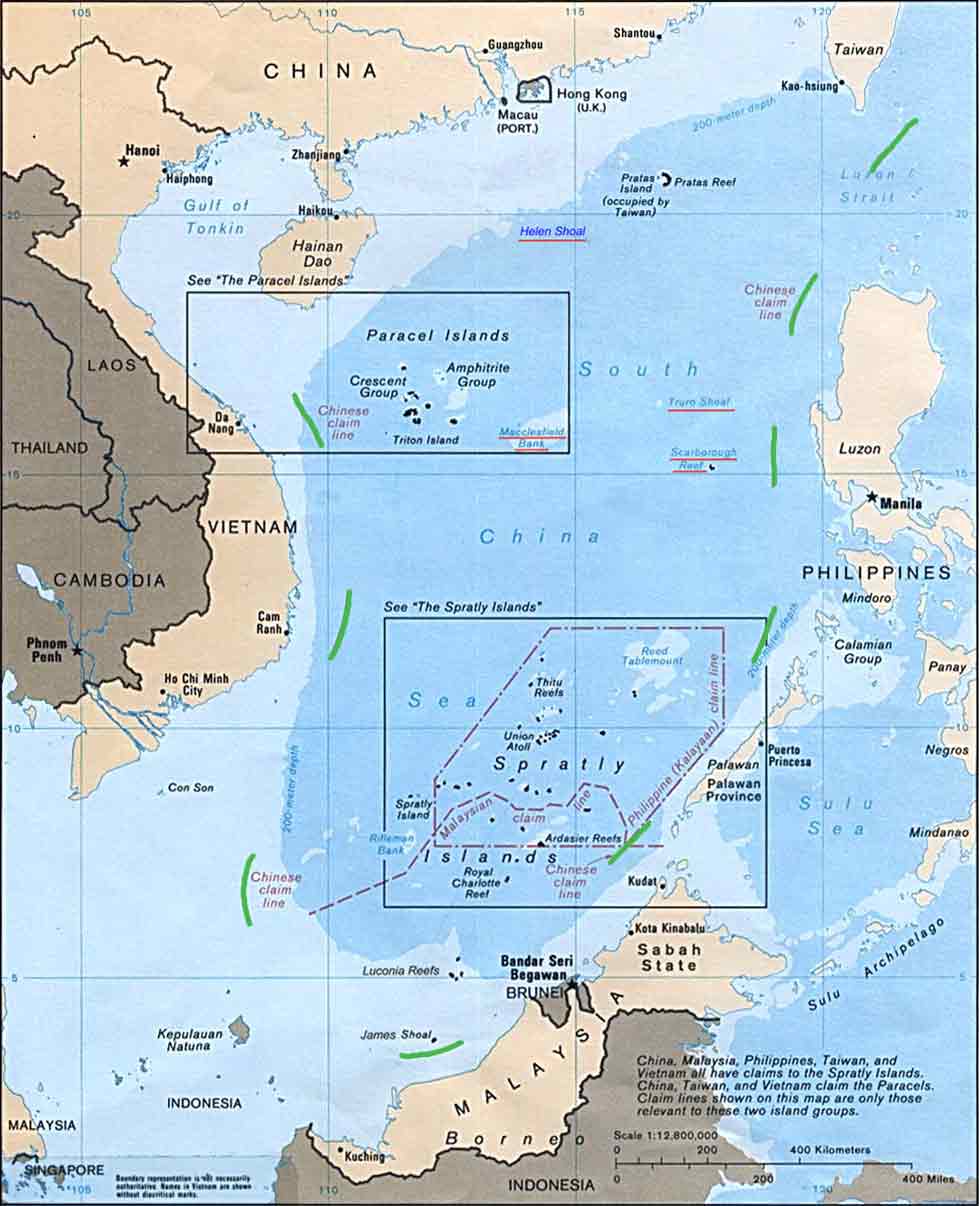
×
![]()
The Permanent Court of Arbitration in The Hague, Netherlands, has ruled in favour of the Philippines over the South China Sea dispute by saying that China has no legal basis to lay claim by history, of the South China Sea. China has however rejected the ruling made by the international court saying in a statement by the Chinese Foreign Ministry that “China neither accepts nor recognizes it.”
China, Vietnam, the Philippines, Taiwan, Malaysia and Brunei all have competing claims as to ownership of the waters. China has however made a firm grip on its hold of the waters by building islands and deploying armadas of ships to supervise the disputed waters. The United States has however been accused by China of militarising the Sea by “playing police,” sending ships and planes for “freedom of navigation” operations for uninterrupted passage through key shipping and air routes as they (United States) claims.

×
![]()
China claims by far the largest portion of territory —an area defined by the “nine-dash line” which stretches hundreds of miles south and east from its most southerly province of Hainan. The Chinese government has said that its ownership of the area of water dates back to centuries when the Paracel and Spratly Islands were under China. The “nine-dash line,” was drawn in a map China released in 1947, the basis of its claims of ownership of the waters. Critics have however falsified China’s claim of ownership saying the old map’s “nine-dash line” showed no co-ordinates. It is also unclear if the “nine-dash line” showed ownership of just land or the entire water within the dashes.

×
![]()

×
![]()
The Philippines, a major contender for rights to the South China Sea, claims ownership of the Scarborough Shoal basing this on the proximity to the tidal sandbar. This seems logical a claim as the island is about 160 kilometres from The Philippines but 800 kilometres from China. The Philippines also claims a small number of islands on the Spratlys. The recent ruling by the international arbitration court has been seen as a big win for the Philippines in the dispute.

Global Markets Plunge As Trump’s Sweeping Tariffs Spark Recession Fears
Devastating 7.7 Magnitude Earthquake Rocks Southeast Asia, Killing Multiple People
Trump Announces Sweeping 25% Tariffs On Imported Cars And Parts
Sensitive US Military Plans Leaked In Stunning Security Breach